Restaurant sales were flat in recent months
Consumer spending in restaurants edged higher in April, but overall sales volume remained lower than the recent highs posted in late-2023.
Eating and drinking places* registered total sales of $93.9 billion on a seasonally adjusted basis in April, according to preliminary data from the U.S. Census Bureau. That was up 0.2% from a total sales volume of $93.7 billion in March.
Despite the modest increase, April represented the continuation of a recent soft patch in restaurant sales. After topping $94.5 billion in both November and December, total eating and drinking place sales volume dropped below $94 billion during each of the first 4 months of 2024.
Although restaurant sales leveled off in recent months, they still held up relatively well compared to other retail sectors. The 5.5% increase in eating and drinking place sales between April 2023 and April 2024 was more than double the 2.7% gain in non-restaurant retail sales during the same 12-month period.
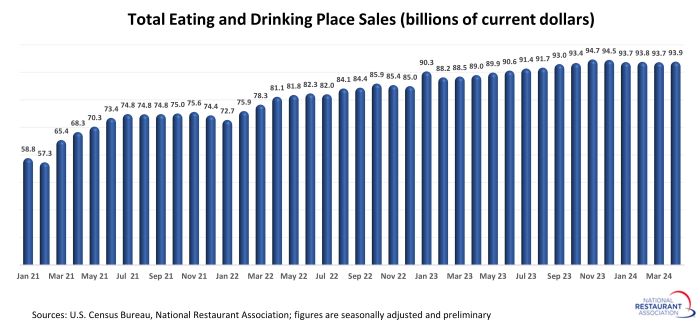
While overall restaurant sales were flat in recent months, menu prices continued to trend higher – albeit at a much slower pace than in 2022 and 2023. As a result, the trendline of real restaurant sales turned slightly negative. After adjusting for menu price inflation, eating and drinking place sales declined in 4 out of the last 5 months.
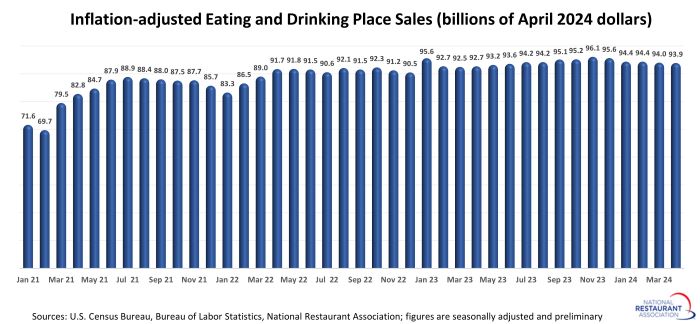
Pent-up demand remains firm
While overall restaurant sales remained relatively flat during the first 4 months of the year, the National Restaurant Association’s measures of pent-up demand held steady. Forty-four percent of adults say they are not going out to restaurants as often as they would like, according to a survey fielded May 3-5, 2024. That was essentially on par with consumer surveys fielded during the last 2 years.
Meanwhile, 38% of adults say they are not ordering takeout or delivery from restaurants as often as they would like. That was up slightly from recent surveys.
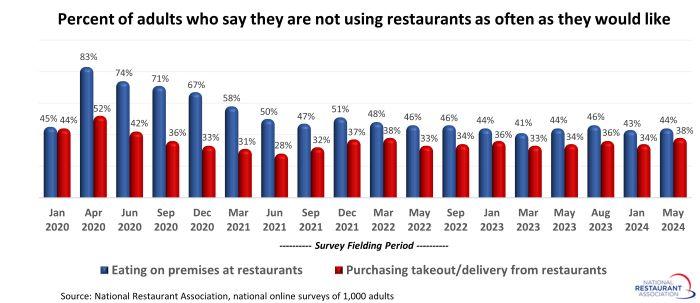
Members of Generation X are the most likely to say they aren’t using restaurants enough. Forty-seven percent of Gen Xers say they are not eating on premises at restaurants as often as they would like. Less than 4 in 10 Gen Z adults reported similarly.
Gen Xers and baby boomers are the most likely to say they are not ordering takeout or delivery from restaurants as often as they would like.
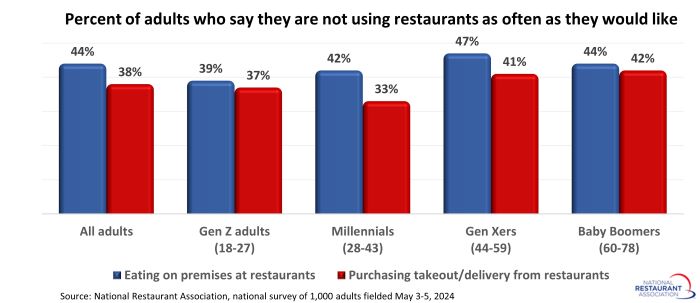
Pent-up demand is higher among lower-income households, with a majority of consumers in households with income below $50,000 saying they would like to go out to restaurants and order takeout/delivery more frequently.
Meanwhile, nearly 3 in 10 adults living in households with income above $100,000 say they are not going out to restaurants as often as they would like.
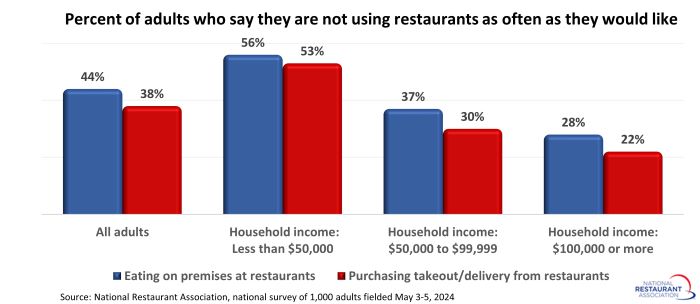
Any amount of unfulfilled demand among higher-income households is an important indicator for restaurants, as this demographic group represents the majority of spending in the industry.
According to data from the Bureau of Labor Statistics, households with incomes of $200,000 or higher are responsible for 24% of the total spending on food away from home, while households with incomes between $100,000 and $199,999 account for 33% of industry spending.
Taken together, households with income above $100,000 are responsible for nearly 6 in 10 dollars spent in restaurants.
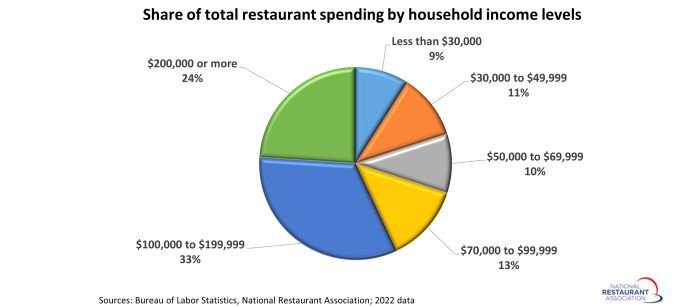
*Eating and drinking places are the primary component of the U.S. restaurant and foodservice industry and represent approximately 75% of total restaurant and foodservice sales. Monthly sales figures presented above represent total revenues at all eating and drinking place establishments. This differs from the National Restaurant Association’s sales projections, which represent food and beverage sales at establishments with payroll employees.
Read more analysis and commentary from the Association's economists, including the latest outlook for consumers and the economy.